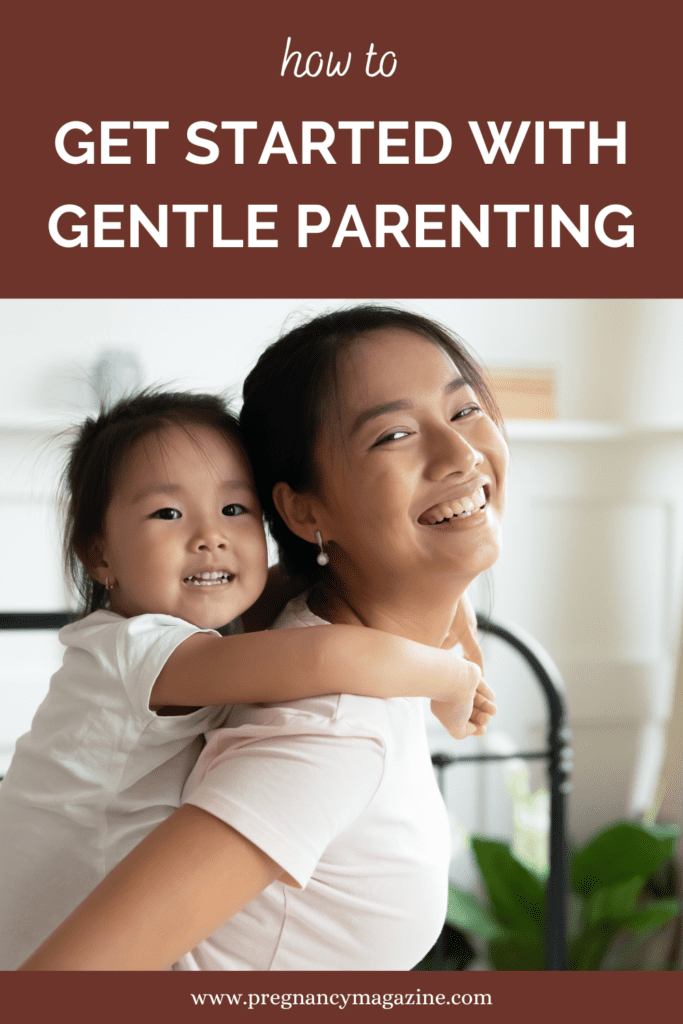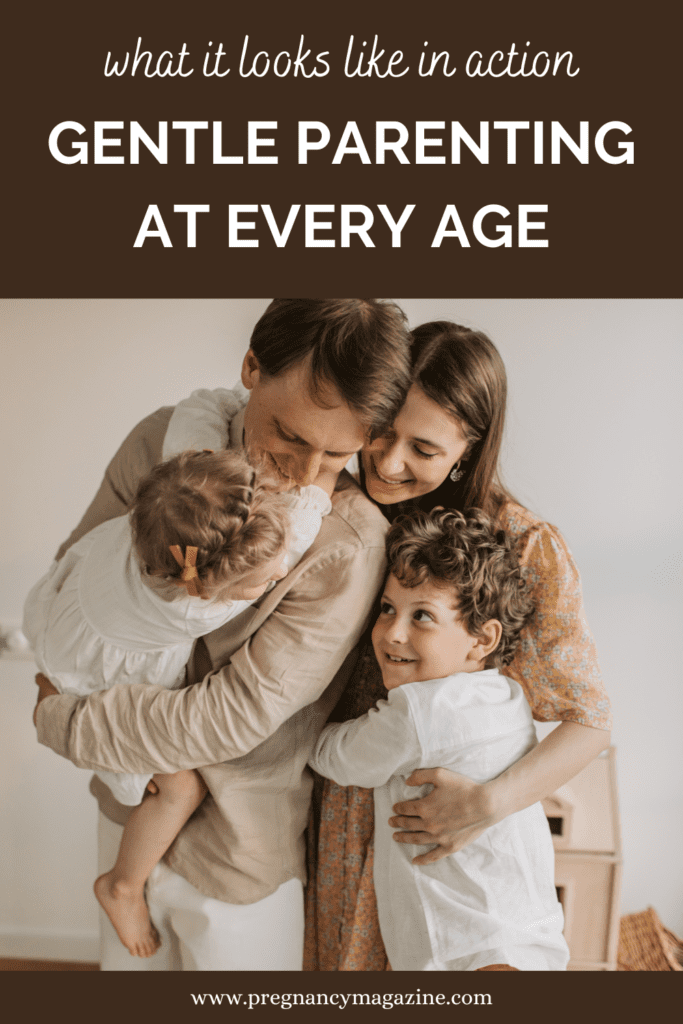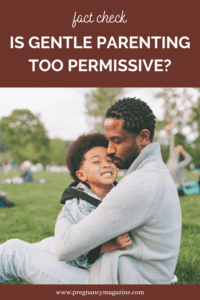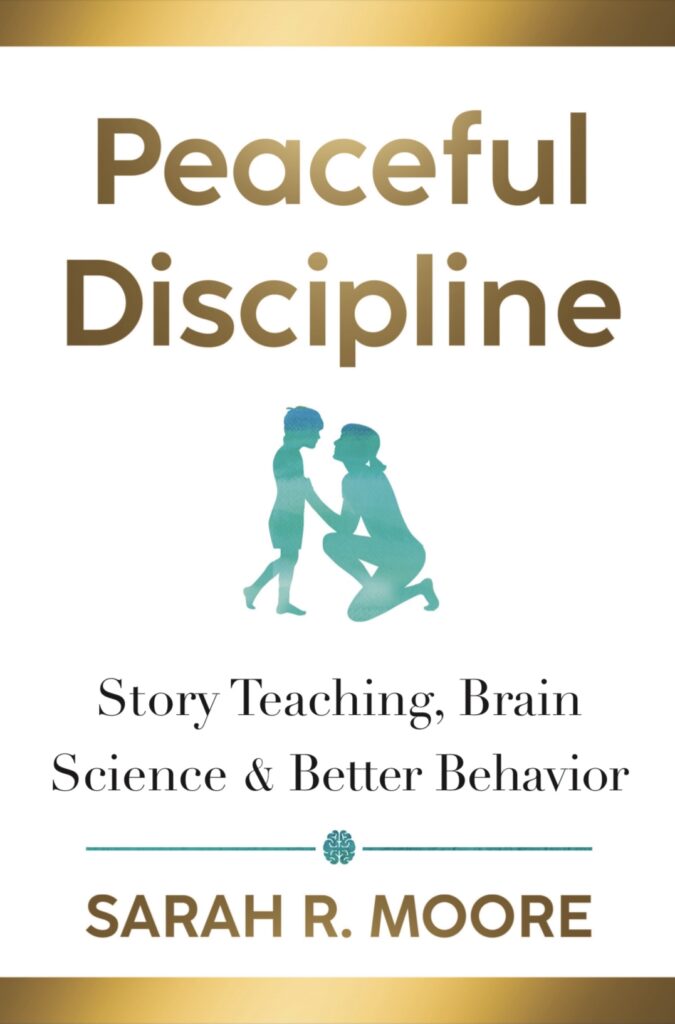
Gentle parenting refers to parenting with the good of the relationship in mind, prioritizing both the parents’ and the children’s physical and emotional well-being. This parenting method has gotten a lot of attention over the past few years. It’s transforming families in powerful and effective ways.
It also happens to be one of the most completely misunderstood parenting styles out there.
- Some people equate gentle parenting with a permissive parenting style and believe children raised this way know no boundaries.
- Other people assume it’s another word for authoritative parenting. Here, parents show high degrees of warmth for their children, but also having high expectations about their children’s behavior. People wonder if this parenting style has any drawbacks, though.
- Other parents are (understandably) confused between all the terms and “flavors” of parenting these days. These include respectful parenting, positive parenting, conscious parenting, lawnmower parenting, helicopter parenting, and so many others.

In this article, founder of Dandelion Seeds Positive Parenting, Master Trainer, global parenting coach, and author Sarah R. Moore will unpack all this. She’ll help you parent in ways that are optimal not only for you, but also for your child’s mental health, emotional well-being, and secure attachment.
Recommended reading: gentle parenting book Peaceful Discipline: Story Teaching, Brain Science, and Better Behavior
What is gentle parenting?
Gentle parenting is a parenting approach that helps you lead with love in the following five ways. Here’s what you do as a gentle parent:
- Emphasize respect for the child
- Gentle parenting prioritizes treating children with respect and dignity. This means acknowledging their feelings and opinions, even if you don’t always agree with them. It also means treating them with the same value that you ascribe to anyone else you care about.
- Encourage non-violent, positive communication
- Gentle parenting emphasizes positive communication that builds trust and understanding between parent and child. This includes active listening, validating feelings, and using respectful language.
- Take a nurturing approach to discipline
- Gentle parenting reminds us that “to discipline” means “to teach.” We know that children learn best through connection and our ongoing (albeit imperfect) patience.
- Reject traditional methods of punishment, and instead, emphasizes positive communication, understanding, and problem-solving
- Gentle parenting rejects harsh punishment and instead emphasizes a nurturing approach to discipline. This means co-creating clear boundaries and having age-appropriate expectations, using natural consequences, and focusing on teaching and problem-solving rather than punishment.
- Focus on the parent/child dynamic, fostering a healthy and secure attachment
- Gentle parenting reminds us that when problems arise, it’s not us versus our children; it’s us alongside our children versus whatever problem we’re trying to solve. We’re less concerned about immediate outcomes and more focused on the long-term good of the relationship.
Age-specific examples are below.

For what ages should we use gentle parenting?
The gentle parenting approach is for children of all ages, from younger children (including babies) all the way through the child’s development, including older children and teens. Below is an idea of the main elements it comprises, with examples.
How to practice gentle parenting
What gentle parenting looks like at different parenting stages
Babies
If you have a crying baby, how do respond? Non-gentle parenting methods perpetuate the myths that babies must learn to self-soothe and that their crying is to manipulate their parents.
In gentle parenting, parents recognize that experts now have the brain science and attachment data to know that it is literally impossible to spoil a baby with too much love and responsiveness (source).
The more emotionally attuned we are to our babies’ needs, the stronger their early attachment to us will be. This is a good and healthy connection with lifelong benefits, not the least of which are protection from toxic stress and long-term health benefits to their physical health (source).
Toddlers and preschoolers
Toddlers and preschoolers are the ultimate explorers. Knowing this, adults need to
- Let these children investigate their surroundings within the framework of their newfound independence, albeit with healthy boundaries for their safety
- Allow children autonomy and believe in the importance of consent (in other words, we don’t force them to do things they don’t want to do, such as “kiss Uncle Charlie”)
- Validate the child’s feelings and emotional experiences
Example: “I see you want the scissors. The adult scissors are too sharp, and I can tell you’re upset that I had to put them away. Would you like me to hold you until you feel calm? [If the child wants the adult’s emotional support, the adult holds space for their feelings until they pass, not rushing them.] Once you’re ready, we can go find your craft scissors together. Those are safe.”
Little kids’ big feelings are completely normal in most cases. The parent’s job is to be an emotional anchor for them. Not all behavior is okay (hence, limits), but in gentle parenting, all feelings are safe for children to express to their trusted adult(s).
Additionally, rather than using common punitive methods such as time-outs intended to make kids suffer for their mistakes, we replace those with time-ins and natural consequences. We also remember that they often learn best through play (more on this in the book).
This is a critical age for creating emotional safety for children. Parents lay the emotional groundwork so that children choose to run to them with their problems, knowing they’ll be supported, rather than run away from them for fear of how they’ll react.
Helpful note
Many adults opt to with a parent coach to help promote regulated responses and reparent themselves if they didn’t learn these skills from their own family of origin.
Older kids
Although it’s important for all ages, adults should model positive behavior, along with emotionally healthy and positive social skills for their children.
Parents should continue to prioritize emotional safety for their children, knowing that just like when children are littler, play and connection are going to be the primary ways kids learn.
Many adults now wonder if their children are “old enough” for punishment. In reality, however, it’s all the more important that kids feel safe — and punishment isn’t the answer. This brief video explains why.
How will they learn, then?
When the adult practices active listening and collaborative problem solving, along with modeling the behavior they want to see, children learn these life skills for themselves.
Example: “I hear you’d really like to ride bikes with your friends instead of doing your homework. That makes sense to me — riding bikes is fun! Let’s brainstorm something that feels right to both of us, so that your homework gets done and you have time to do something enjoyable today.”
Tweens and teens
Many parents are worried about behavior issues like backtalk at this age. The first step is to know how to understand it, and then, secondly, how to respond.
It can help to remember the many positive traits of this age, along with remembering that children this age are experiencing the second biggest time of brain growth in their lives. They’re doing the best they can while so many changes transpire in their bodies. Big emotions are to be expected. So are incredible moments of connection and joy together.
Once again, model self-control and patience, and children will learn to respond in kind. Also remember that children this age thrive on feeling valued (as all people do), so rather than just setting clear guidelines about behavior, co-create agreements whenever possible.
Also make sure to keep school and other commitments in check–no child thrives when they’re physically, socially, and/or emotionally overwhelmed. They need predictable and regular downtime. After-school restraint collapse can happen earlier, too, but it’s still prevalent now. Give children time to exhale.
Is it too late to start a gentle parenting approach?
Many fear that the parenting advice they receive about how to be a gentle parent no longer applies to them if they’ve “missed the mark” and started out with a less-than-ideal parenting style.
The research says, however, that it’s never too late to adopt a gentler approach to child rearing.
In Peaceful Discipline, here’s what we learn about how to recover from the negative impact of our earlier choices.
How to repair from our mistakes:
“…I use a modified version of the work of the Gottman Institute:
1. Acknowledge that you hurt the child’s feelings. (“I know I made you really sad when I yelled at you this morning.”)
2. Apologize sincerely and ask forgiveness, without expecting anything—including forgiveness—in return. (“I’m so sorry I yelled. I was wrong to express my anger in such a harsh way.”)
3. Describe the specifics of what you’ll do differently next time (not just “I won’t yell anymore,” but something like “Next time I’m tempted to yell, I’m going to pause and take some belly breaths before reacting. You deserve to be treated gently and respectfully. Will you please forgive me?”)
Some children—in their wonderfully brutal honesty—will say what many of us are thinking when we’ve been wronged: No! I’m not forgiving you. That doesn’t mean you need to say or do more, nor does it mean they are guaranteed to never forgive you. Most of the time, it translates to ‘I’m still upset.’
What we can do if this happens is to allow space for their feelings. We can’t make them forgive us, but we can show them that it’s safe to be upset. We love them, anyway. Period. Unconditionally…”
This takes practice, of course. It also takes grace–not only for our children, but also for ourselves. It takes time to learn new habits. Model kindness in your inner dialogue, especially if you learned your parenting method from your family of origin.
Won’t our kids question our authority if we apologize?
No, they won’t. To the contrary, they’ll learn how to apologize when they make mistakes–because you’re creating emotional safety around apologizing. It’s a life skill. Apologizing helps heal relationships. Child’s emotional well-being and emotional maturity improve when we’re willing to take ownership and accountability for our past mistakes.
What sets gentle parenting apart from other methods?
The key difference between a gentle parenting style and many other approaches is that here, the parent prioritizes the good of the long-term relationship. This means that we worry less about being “in charge” or controlling our kids, and focus more on creating a daily life that feels peaceful to both parents and children.
Can you do gentle parenting when you have multiple children?
Yes. Whether you have one child, four children, or 100 children (oh my), you can use gentle parenting.
Does it “work” for all children?
Every child benefits from a peaceful and respectful approach, whether the child is highly sensitive, so-called “strong willed,” or anywhere in between (more on raising a strong-willed child here). Furthermore, respect, understanding, and boundaries that honor the child’s needs are important for neurotypical as well as neurodiverse children.
Are there boundaries or consequences in gentle parenting?
Yes. However, boundaries and consequences may not look like we expect them to, or what we learned about them in our own childhood. The evidence-based approach to parenting prioritizes empathy, respect, understanding, and collaboration, and is detailed in Peaceful Discipline.
In gentle parenting, rather than an adult who will always unilaterally set boundaries, the parent and child often work together to co-create age-appropriate boundaries.
Benefits of Gentle Parenting
When children are treated with respect and empathy, they develop a strong sense of self-worth and self-esteem. This can have lifelong benefits, including better mental health, stronger relationships, and greater resilience. (source)
Gentle parenting also helps children develop important life skills, such as empathy, problem-solving, and conflict resolution. When parents model positive communication and problem-solving skills, children are more likely to internalize these skills and apply them in their own lives. (source)
Finally, gentle parenting promotes a positive relationship between parent and child. When parents prioritize respect and empathy, children are more likely to feel safe, loved, and valued. This can lead to a closer bond between parent and child and a more positive family dynamic overall. (source)
Are There Any Problems With Gentle Parenting?
When done correctly, gentle parenting is linked to only positive outcomes. Below are some common myths.
Unpacking the confusion around gentle parenting
The beginning of this article touched on three common misconceptions around gentle parenting methods. Let’s clear those up now as they relate to other parenting styles.
Confusion with permissive parenting
Gentle parenting is not permissive. According to this helpful report, gentle parents do have healthy limits. (source) Here’s how to handle it peacefully when a child of any age pushes boundaries.
Potential drawbacks of authoritative parenting
According to the American Psychological Association, this parenting approach means “parents are nurturing, responsive, and supportive, yet set firm limits for their children. They attempt to control children’s behavior by explaining rules, discussing, and reasoning. They listen to a child’s viewpoint but don’t always accept it.” (source)
If a parent wants to incorporate gentle parenting into their life but still focuses on the desire to “control” a child’s behavior, it is not aligned with gentle parenting. The child needs to feel emotional warmth and know that all their emotions are safe to be expressed, and not met with so much “firmness” that overrides their perceived safety.
What about all the synonyms for gentle parenting? Are they all the same?
The consensus is that we should worry less about what we call it, and focus more on whether parents and children both feel genuinely good about the relationship most of the time.
What if my partner or co-parent isn’t on board?
According to the research, it takes only one person who consistently (albeit imperfectly) makes the child feel seen, soothed, safe, and secure, which are the four main elements of a secure attachment. (source)
If your parenting partner isn’t on board with gentle parenting, talk to them about it, get curious about why they’re resisting, and keep modeling the parenting approach you hope they’ll embody.
You and your co-parent do not need to be on the same page with all things parenting. What’s more important is that you model respect for one another in front of your family.
Recommended resource: Positive Intelligence coaching for couples

Who’s the best parenting expert to follow for gentle parenting tips?
In addition to Dandelion Seeds Positive Parenting (online courses, blog, and book), the author has included comprehensive list of reputable experts in the Resources section of Peaceful Discipline.
Remember that gentle parenting is a practice
At its core, gentle parenting is about treating children with respect and empathy, understanding that children’s feelings, needs, and boundaries matter. At the same time, parents’ feelings, needs, and boundaries also matter.
Gentle parents believe their children are worth respecting from the very beginning, and that by modeling respect and kindness, they raise children who are both respectful and kind.
Finally, with the same amount of grace that adults extend to their children, they must also express grace to themselves. It is a practice that takes effort, practice, and skill, and when our humanity inevitably shows through, we must remember the power of repair.
Gentle parenting is cycle-breaking parenting and genuinely helps make the world a better place for generations to come.



🙂